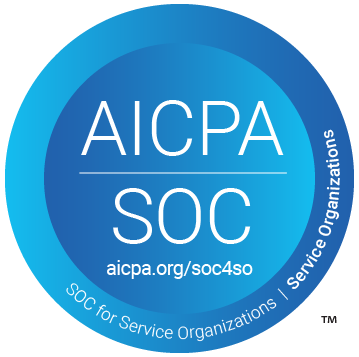Most brands that leverage life event data as part of their customer retention strategy see an increase of 10x the response rate – as opposed to brands that don’t.
Moreover, life event data allows brands to personalize their customer retention strategy promoting effectiveness.
2020 – The year customer retention changed the game
2020 was tough for many traditional brands. Large swaths of the economy shut down. People were socially distancing and staying close to home. Shopping and buying habits were rapidly evolving to suit the new environment. Online retailers were seizing the opportunity with their seemingly endless product offerings and the increasing ease of transacting online. To survive in the new environment, brands needed to adapt.
The key to success in that new environment was a shift from growth through acquisition at all costs to a mindset of developing lasting customer relationships.
New customer acquisition as a sole growth strategy needed to be replaced by introducing a more comprehensive and predictive customer retention strategy. I’m sure many of us have now come across the infographic from MyCustomer, which gives a fantastic overview of the nuances between how brands leverage channels and tactics when acquiring or retaining customers.
Developing loyalty – and where companies fail
Brands should focus more on retaining and understanding how to develop loyalty and drive share of wallet from their customers. Too often, they have not set themselves up for success in these efforts – from a data, technology, and organizational perspective. According to a poll done by Brightback, marketers cite the following three challenges to improving their customer retention strategy:
- Lack of a cohesive approach to customer retention across the organization
- Inability to automate tailored or personalized communications at the right time to consumers
- Lack of predictive methods to identify who will cancel in the future
One glaring challenge stood out from my review of Brightback’s poll – marketing was typically not at the forefront of driving the customer retention strategy. It was the customer success/customer service teams’ responsibility. To better address the three challenges identified by Brightback, retention needs to be a marketing-first approach.
Why?
- Marketing teams are more likely to have mechanisms in place to identify and communicate with customers quickly and effectively.
- Marketing teams generally have the contacts, ability, resources, and experience to enrich customer data with third-party data to improve insights.
- Marketing teams have analytical resources to build or improve customer churn rate models – or they know where to get external help.
One of the best types of third-party data that marketers can leverage in their retention strategies is consumer life event data. When consumers move, get married, or have children, their purchase habits fundamentally change.
For example, consumer data indicates this sector spends over $9,000 and engage with over 70 brands when moving. As a brand marketer, understanding when your customers are experiencing that change means you can get into their inbox or mailbox before your competition – putting your brand top of mind, allowing it to retain the business, and increasing overall customer lifetime value.
Developing a Life Event Strategy
When it comes to a brand’s customer retention strategy, how can a marketer put this data to use?
When Speedeon engages with our clients, the first recommendation is often to conduct a histogram analysis. This analysis allows us to look at how correlated a type of life event is to when consumers churn from the brand as well as how the brand indexes overall for life event data.
Real-Life Strategy Example: Speedeon ran a histogram analysis for a leading food subscription box company and found that nearly 37% of cancellations by their highest-value customer segment had moved within 2 weeks of the cancellation. The client ultimately concluded that saving just 5% of their churned customers would equate to $1,500,000 in bottom-line revenue each year.
They have since ingested the mover trigger into their new customer acquisition and retention marketing strategies. Since then, their mover program has become a top performer.
Understanding these correlations will allow brands to optimize communication strategies as they will gain an understanding of how long before or after an event the consumer churned from your brand and allow you to personalize your messaging to retain their business.
Depending on the length of time from event to churn, a brand may be able to use direct mail as a tactic or determine that it needs to move faster and send an email. This timing component is critical to ensuring optimal retention.
Leveraging life event data
There are several ways to leverage life event data in marketing communication.
Some brands leverage life event data in their ongoing email trigger programs – if a customer is flagged as putting their home for sale, a telecom provider might send an email to “take us with you.” Other customers use it as an opportunity to cross-sell and upsell, remind customers of their best features, or ensure they’re top of mind.
Check this link out for additional information on Life Event Data.
Not all life event data is created equal.
First and foremost, you’ll need to understand what life event data is most important for your brand to focus on, as some will affect your brand more than others. Additionally, when looking at third-party data providers, know that not all life event data is created equal.
For example, many vendors of moving data scrape websites and compile public sources of information, then apply basic suppression and validation techniques, and then ship it out. What those providers miss, however, is applying analytics in their approach to movers. These vendors do not allow for additional demographic insights or the ability to understand if you are talking to prospects or customers. Each audience may require a different message and potentially offer, to convert.
If you are a bank, you may want to mention complementary products (customer is moving, perhaps a loan or financial review is in order) if it is a current customer, or if it is a prospect, it may be an account opening cash bonus.
These nuances in offers can help you upsell/cross-sell your products and services to your customers.
Speedeon’s process for top-notch data
Speedeon does this better than our competitors. We pull all these sources together, verifying them against one another, and then cross-checking consumer databases to ensure accuracy, eliminating non-contributing false positives and allowing for additional data overlays. While this will cause a slight increase in data spend up front, it ensures quality data and allows the marketer to be much more sophisticated in their efforts.
As an example, if you know these are loyal customers, perhaps your messaging is giving them points instead of money off.
In today’s world, where brands want to be more sophisticated in managing the customer journey, this benefit can be invaluable.
Coverage and accuracy are important. However, the biggest factor in determining the success of a program, particularly in mover marketing, is timeliness. Being first in the mailbox or inbox will mean you’re top of mind, at the right time. That’s where leveraging an agency to run your life-event program can be integral to success.
For example, Speedeon monitors many large brands’ CRM files for changes in their customer data. We then flag these records and either get them to a mail house or return them directly to our clients, who can then send a triggered email, deploy an in-app banner ad, or phone their customers directly.
Measuring success
Your results, your customers, and your brand are different. And we can help you.
We’re happy to provide a free consultation to help you build your customer retention strategy leveraging life event data. This includes a life event histogram analysis and ROI calculation to see if they can positively impact your bottom line.
If you enjoyed this article on how to improve customer retention strategies, check out:
Can Reaching New Movers Help Your Brand Find Leads?
5 Ways to Track Your DM Campaign
How to Retain More Customers with Life Event Data
Insurtech Company Turns New Movers into Customers

